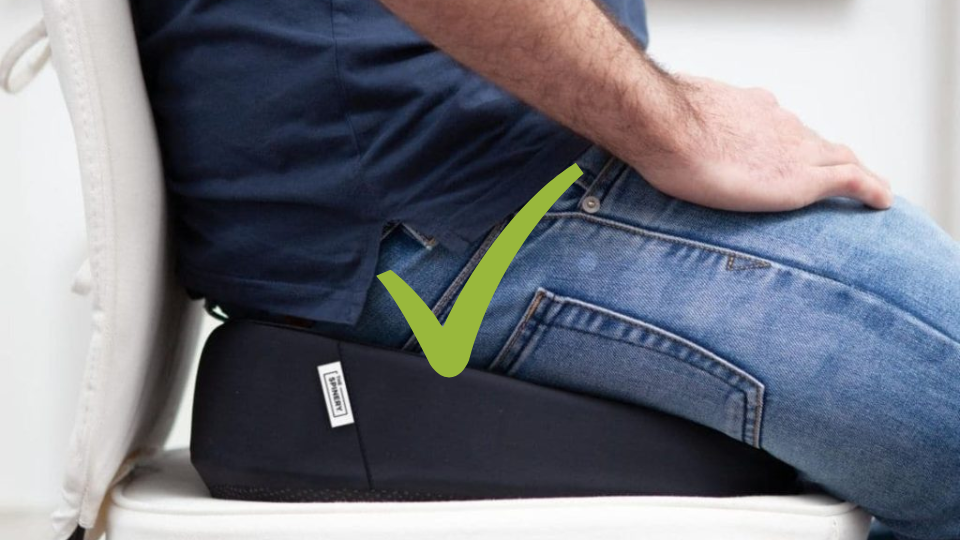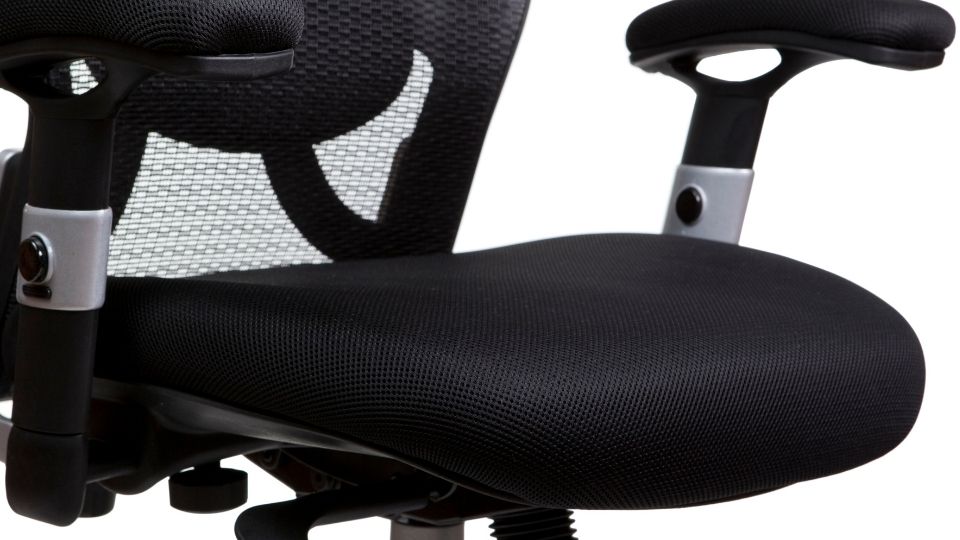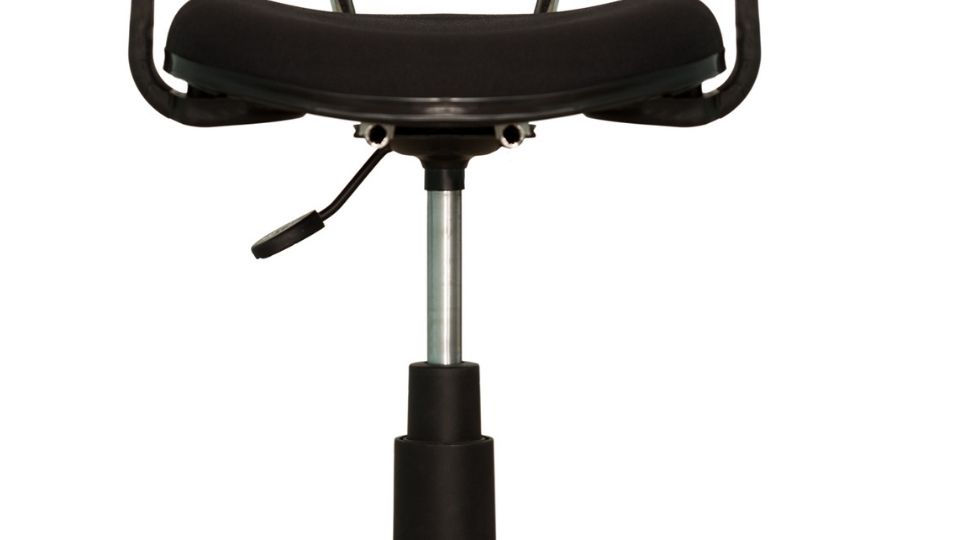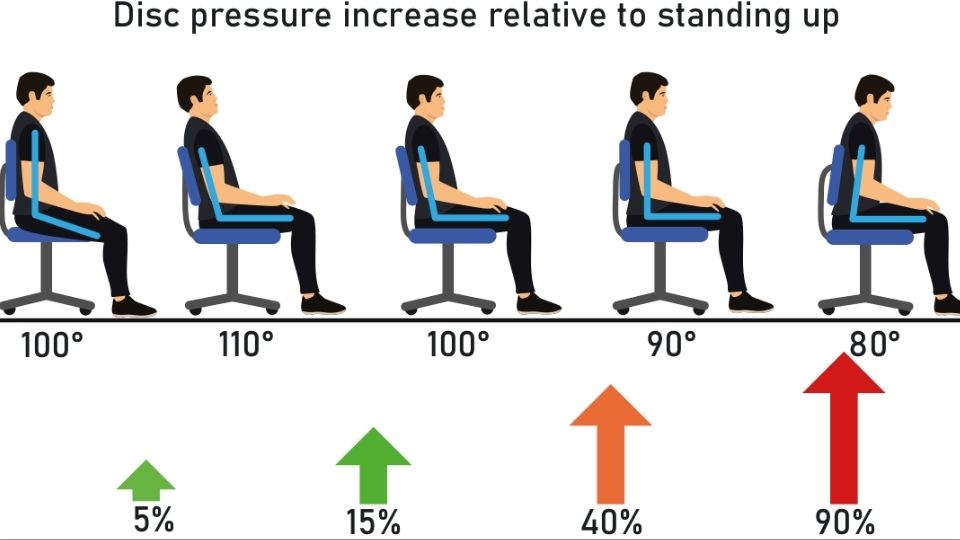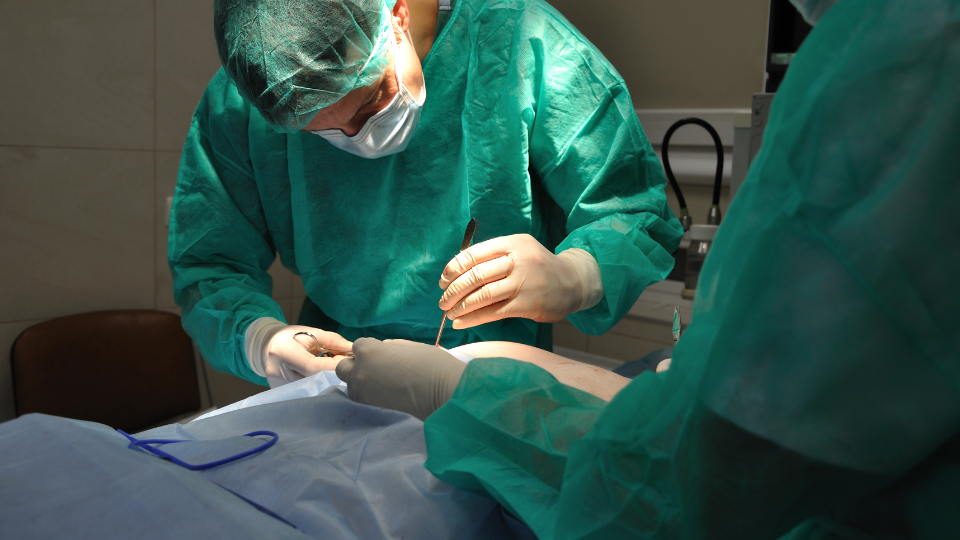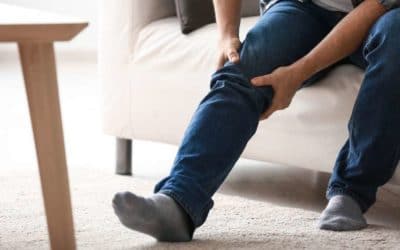If you have had surgery on your back, it is crucial to know how to sit so that you do not cause additional pain or damage. Sitting in the wrong position can aggravate your healing muscles and tissues and prolong your recovery time. Here are some tips for sitting comfortably after back surgery.
As a general rule, the best way to sit after back surgery is by staying properly aligned and avoiding slouching. Use an ergonomically designed chair or orthopedic seat cushion to provide additional support for the spine, pressure point reduction, and improved alignment for better recovery.
My goal is to help you find the best way to sit after back surgery. I have been practicing chiropractic and physiotherapy for over 30 years. During that time, I have also been studying ergonomics, wrote a book on this subject, and ran a Kickstarter campaign to raise funds for developing my latest project, ergonomic seat cushions. All this experience and expertise allow me to provide some helpful insight.
**I know this goes without saying, but I hope all spine surgeons are incredibly meticulous when performing anterior discectomies and fusion. They should consider the alignment and stresses of the spine so that the post-surgical final position of the adjacent vertebra is not compromised. If there is a misalignment of a reconstructed segment, it could lead to kyphosis, which creates a biomechanical disadvantage. This could then affect the breakdown of the adjacent segment. Therefore, it is critical that spine surgeons consider extreme detail to avoid any complications.
Can You Sit After Back Surgery?

After surgery, it’s important to take it easy and allow your body time to heal. To avoid straining incisions, it is recommended:
- Limit sitting time to 20 minutes for the first two weeks, and increase it to 40 minutes in four weeks.
- If you feel uncomfortable, it is important to listen to your body and take breaks by either lying down for 30-60 minutes or taking a short walk.
By following these guidelines, you can help ensure a full and speedy recovery. *
Is It Better to Lay Down or Sit After Back Surgery?
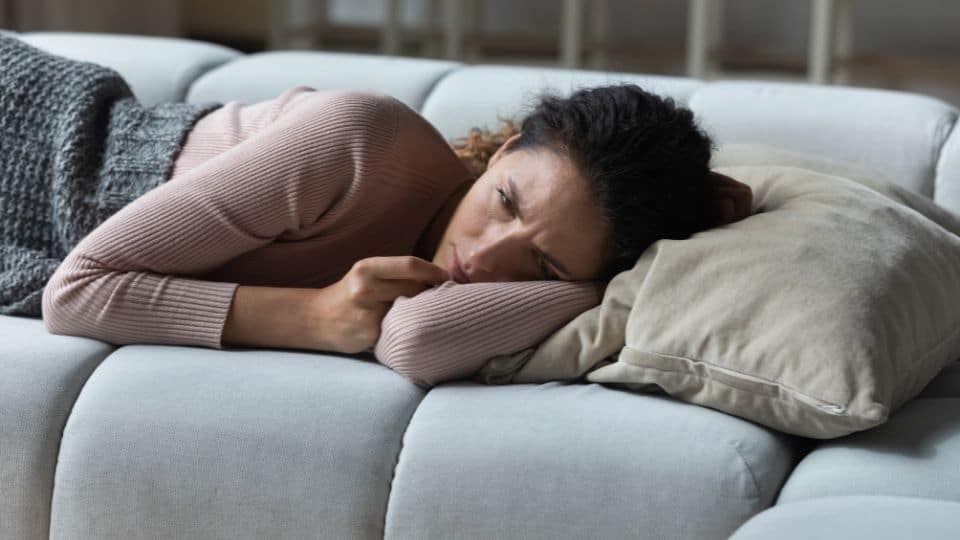
Getting enough sleep after back surgery is essential to allow the body to heal correctly. It is critical to have a good orthopedic mattress! There are a few different positions that people often find comfortable after back surgery, such as side sleeping with a pillow between your knees or behind the back for support. However, sleeping in whatever position is most comfortable is generally okay.
Additionally, sitting is limited to 20 minutes for the first two weeks after surgery, but this time limit is increased to 40 minutes after four weeks. Therefore, getting enough sleep and minimizing low back strain is important through better body positioning after surgery.*
How Long After Back Surgery Can You Sit?
Back surgery is a serious procedure that requires a significant period of rest and recovery. Although you will be encouraged to walk and move around the day after surgery, you will need to limit your sitting to 20 minutes for the first two weeks. This period gradually increases to 40 minutes in four weeks.*
After back fusion surgery, many patients are left with a long recovery process. One of the things that can help during this time is an ergonomic seat cushion (above). These cushions offer pressure support, spinal alignment, and comfort, all of which are essential for healing. Pressure support helps to distribute weight evenly, preventing undue strain on the back.
Best Seat Cushion for SupportDoctor's Recommendation
Black Friday Offer!
Get 35% off Orthopedic Seat Cushion
Product DetailsResearch-based Design
Recommended ForBack Discomfort
Video Guide
Video Guide
Spinal alignments keep the spine in its natural position, promoting proper healing. And comfort allows patients to rest and relax, which is crucial for the body to heal. I found that ergonomic seat cushions were incredibly beneficial for my patients after back surgery and would highly recommend them to anyone in the same situation.
It is essential to follow these instructions carefully, as sitting for too long can strain your back unnecessarily and delay the healing process. If you have any concerns or questions, speak with your surgeon. You should fully recover from back surgery with proper care and ample rest.
How Much Should I Lay Down After Back Surgery?
Once you have had back surgery, getting enough sleep is essential so your body can heal. There are a few things you can do to make sure you get continuous, uninterrupted sleep:
- Minimizing low back strain through better body positioning can improve rest. It is generally OK after back surgery to sleep in whatever position is most comfortable.
- Using a pillow under your knees can help take the pressure off your lower back.
- Sleeping on your side with a pillow between your legs can help keep your spine in alignment.
- Avoiding caffeine and alcohol before bedtime can help you get a good night’s sleep.
By following these tips, you will be on your way to getting the rest and healing you need after back surgery.
Black Friday: 35% Off Today
Typical Delivery 1-3 Days
What Kind of Chair Should You Sit In After Back Surgery? | 4 Vital Features
When choosing a comfortable chair, there are four key factors to remember: height, seat depth, forward tilt, and reclining. The seat should be high enough to support your lower back and prevent slouching. This positioning helps reduce strain on the spine and makes it easier to maintain good posture. In addition, the seat should be deep enough to allow you to sit back without hitting the back of the chair.
The chair should also have a slight forward tilt to support your lower back, and it should be able to recline slightly to take pressure off your spine. By keeping these factors in mind, you can find a chair that will provide optimum comfort and support for your back.
Depth of Seat
Anyone who has chronic low-back problems should be concerned with seat depth. It affects their ability to maintain a neutral spine while sitting and how far up off their feet they’ll feel when you’re all done ergonomically typing away at work! Make sure that any desks or chairs don’t make this part too high not to force people into an uncomfortable position and alleviate some pain points entirely.
Height of Seat
Your chair’s height is an essential factor for back pain relief. The seat should be high enough so that your lower back is not slouching forward while sitting, and you also need enough leg room to avoid discomfort when moving around in a confined area like at work or home.
Forward Tilt
The forward tilt adjustment on a chair can be a helpful feature for those who sit for long periods. It can help you adjust your posture and avoid slouching, which can lead to discomfort and poor sitting experience over time.
A chair with a hip tilt may help improve your posture and prevent slouching, which is a common problem when sitting for extended periods. Some standards recommend a 20-degree forward lean to prevent pressure on the lower spine and maintain good posture. The hips should be higher than the knees when seated. The angle of the seat on the chair can be adjusted to reduce or eliminate contact with pressure points that may exist if we are seated for extended periods, which can improve the seating experience.
4. Chair Recline
The best posture for your back is a moving one. It can be accomplished by intermittent reclining and putting less pressure on the spine than traditional sitting positions do, which may lead you to avoid painful problems down the line!
What Should I Avoid After Back Surgery?
In the days following back surgery, you should refrain from performing activities that put undue strain on your back. This includes activities that require bending, twisting, lifting more than 5 pounds, or pushing/pulling. Additionally, it would help if you avoided excessive sitting or standing. After a spinal fusion, avoid lifting objects over your head until the fusion is fully healed. Following these guidelines can assist you in ensuring a successful recovery.
What Is the Fastest Way to Recover From Back Surgery?
After back surgery, it’s essential to take steps to help ensure a speedy and successful recovery. One of the most important things you can do is to stop smoking, as tobacco use can impede healing and increase the risk of complications.
It would be best to avoid refined sugars, as they can contribute to inflammation. Instead, focus on eating a nutrient-rich diet with plenty of fruits, vegetables, and lean protein. Getting enough sleep is also critical for recovery, so get at least 8 hours per night. Finally, drink plenty of water throughout the day to keep your body hydrated. These tips can help ensure a successful and speedy recovery from back surgery.
Is It OK to Sleep on Your Side After Back Surgery?
After back surgery, people often wonder what the best sleeping position is. It depends on the individual. People find it most comfortable to sleep on their sides with a pillow between their knees and/or behind them. Others find that sleeping on their stomach or back is better for them.*
Ultimately, it is up to the individual to experiment with different positions to see what works best for them. However, a few general guidelines can follow—maintaining good posture when sleeping is crucial, and avoiding placing too much pressure on the surgical site. Additionally, it is advisable to sleep on a firm surface rather than a soft one like a mattress or couch. By following these simple guidelines, people can maximize their comfort and promote healing after back surgery.
Where to Sit After Back Surgery?
Choosing the ideal chair to sit in is vital for optimal back support and preventing future pain. There are many factors to consider when selecting a chair, such as offer pressure support, spinal alignment, and comfort.
A properly fitted chair will offer all of these features, supporting your lower back and keeping your feet flat on the floor with your knees below your hips. This type of chair is significant after surgery when pressure on the incision site or surrounding muscles and ligaments can cause additional pain. Selecting a chair that meets all your needs can help ensure a speedy and comfortable recovery.
Can You Sit in a Recliner After Back Surgery?
Many people experience lower back pain, which can be caused by various factors such as poor posture, muscular imbalance, and lack of support. Recliners offer pressure support and can help to improve spinal alignment. Additionally, sitting on a cushioned surface can help to reduce pressure on the lower back and make sitting more comfortable.
An adjustable bed may be a good option for postoperative recovery for people undergoing extensive surgery. Adjustable beds offer a higher level of comfort and support than traditional beds, which can adjust to provide the optimal position for healing.
Takeaway
After back surgery, sitting in a way that keeps the spine properly aligned and reduces pressure on the healing tissues is essential. An ergonomically designed chair or orthopedic seat cushion can help you do this. Sitting in an appropriate position can speed up your recovery and help you get back to normal activities sooner. Have you tried using an ergonomic chair or orthopedic seat cushion after back surgery?
Sources:
- Mak, J.N., Hu, Y., Cheng, A.C., Kwok, H.Y., Chen, Y.H. and Luk, K.D., 2010. Flexion-relaxation ratio in sitting: application in low back pain rehabilitation. Spine, 35(16), pp.1532-1538.
- Aoki, Y., Sugiura, S., Nakagawa, K., Nakajima, A., Takahashi, H., Ohtori, S., Takahashi, K. and Nishikawa, S., 2012. Evaluation of nonspecific low back pain using a new detailed visual analogue scale for patients in motion, standing, and sitting: characterizing nonspecific low back pain in elderly patients. Pain research and treatment, 2012.
- Bussmann, J.B.J., Van de Laar, Y.M., Neeleman, M.P. and Stam, H.J., 1998. Ambulatory accelerometry to quantify motor behaviour in patients after failed back surgery: a validation study. Pain, 74(2-3), pp.153-161.
- Marco, R.A., Stuckey, R.M. and Holloway, S.P., 2012. Prolonged bed rest as adjuvant therapy after complex reconstructive spine surgery. Clinical Orthopaedics and Related Research®, 470(6), pp.1658-1667.


